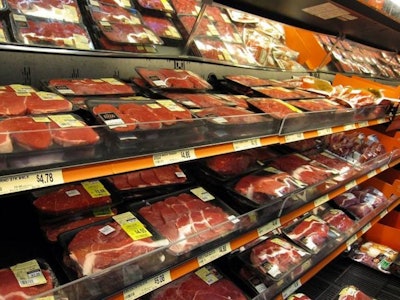
Millennials are buying more protein than any previous generation, but they might be skipping the meat section.
On February 23, Larry Levin and Chris Dubois of Chicago-based market research company IRI told an audience at the Annual Meat Conference 2016 in Nashville, Tennessee, that millennials see protein as a nutritious cornerstone of a healthy diet, but they may not pick meat as the protein food source.
Marketers for other foods, like yogurt and peanut butter, are successfully driving sales to their products by making claims about their protein content. General inexperience in the kitchen and eagerness to try new recipes found online is also pushing the consumer segment to avoid their parent’s copy of The Joy of Cooking as well as their meat buying habits.
The IRI representatives said these facts might be upsetting to the meat industry, but it means there still is great opportunity to grab a foothold with the soon to be largest segment of U.S. consumers.
“Every 50 years there’s a major change that comes through the American economy and the American population, this is one of those that’s happening right now,” Chris Dubois, executive vice president of IRI’s protein vertical, said. “Over the next few years, there’s going to be a separation between the companies that got behind, understood all this and made a difference because right now every protein preference is up for grabs … the meat department has some of the biggest opportunity to make an influence either in the store or on the way to the store. More so than almost any other department in the food industry.”
The millennial protein buyer
Dubois and Levin, executive vice president of IRI innovations, said the 18-to-34-year-old consumers in the United States know they need protein in their diet. They are just unsure of where they should get it.
While there is significant variance inside a demographic with millions of members in the U.S., Dubois said there are a number of notable similarities in buying habits. Because of their age and position in life, the group’s income is lower than the average and the desire to save money often trumps brand loyalty. Because of this and their inexperience in the kitchen, they said, millennials are unlikely to identify and seek out a specific brand of product when shopping and they can have their decisions swayed by sales, in-store advertising and other product demonstrations.
Levin said the meat department in particular has a great opportunity to win lasting influence. As many as 64 percent of millennial shoppers are open to influence when they arrive. The decisions made now can have a profound impact on meat companies as the demographic reaches its prime earning and purchasing age.
“Categories that talk about protein, make the claim on protein, is something that’s going to be very healthy and positive for millennials moving forward,” Dubois said. “What we’re competing against here is a lot of, I would say, pretend protein out there.
“A lot of manufacturers are spending a lot of money to put their word ‘protein’ here and take away your shoppers. They are looking to take them away because at the end of the day, millennials may not differentiate between what’s meat protein and what’s other protein.”
Reaching the millennial consumer
Dubois and Levin said winning over the millennial consumer will require a mixed approach. The group is very receptive to in-store promotion, but it values independent research and customer reviews of the same product.
The speakers said reaching millennial consumers in-store is key to driving sales. In order to drive attention to their products, meat producers need to partner with retailers to create sales, promotions and in-store demonstrations of their products. Levin noted Costco is now hosting cooking classes, which present an opportunity to promote a specific product to an open-minded consumer.
Millennials are also constantly on their smartphones and engaged online, so having an online and social network presence is essential to reaching the demographic. Retailers should also consider the importance of e-commerce and electronic payment options like PayPal, Apple Pay and Android Pay to the group. That doesn’t mean traditional advertising should get the boot, however. Levin said millennials are still receptive to broadcast advertising as well as traditional exterior billboards. In traditional media, it’s a good idea to target young families watching children’s programming and young women reading fitness, lifestyle celebrity related media.
While everyone is different, successfully targeting the demographic and building a relationship with the impressionable consumers could pay dividends for meat companies for decades to come.



















